
PS-2020a / part16
.pdf
DICOM PS3.16 2020a - Content Mapping Resource |
Page 101 |
|
Coding Scheme Designator |
Coding Scheme UID |
Description |
mediaType |
2.16.840.1.113883.5.79 |
RFC2046 |
NullFlavor |
2.16.840.1.113883.5.1008 |
|
ObservationInterpretation |
2.16.840.1.113883.5.83 |
|
Confidentiality |
2.16.840.1.113883.5.25 |
|
ParticipationType |
2.16.840.1.113883.5.90 |
|
8.1 SNOMED CT
SNOMED(theSystematizedNomenclatureofMedicine)ClinicalTerms(CT)isthepreferredcodingsystemwithinDICOMforanatomy, clinical findings, procedures, pharmaceutical/biologic products (including contrast agents), and other clinical terms.
SNOMED has had various versions, including SNOMED International (Version 3), which was issued in 1993 and revised through 1998, SNOMED Reference Terminology, the successor to SNOMED 3 that was published between 1999 and 2001, and SNOMED ClinicalTerms,whichhasbeenthenamesince2002.Thecodingschemeisfullybackward-compatibleacrossSNOMED3,SNOMED- RT, and SNOMED CT. SNOMED CT introduced a solely numeric set of codes (ConceptID) in addition to the former alphanumeric codes (SnomedID), but all SNOMED terminology concepts have both a numeric and an alphanumeric code.
In previous editions of the DICOM Standard, the following Coding Scheme Designators were used for SNOMED codes in DICOM:
•"99SDM", denoting the provisional SNOMED DICOM Microglossary
•"SNM3", denoting SNOMED International (Version 3)
•"SRT", originally denoting SNOMED-RT, but later used to identify SNOMED CT concepts using "SNOMED-RT style" alphanumeric code values
All uses of SNOMED CT coded terms in DICOM are now indicated by the Coding Scheme Designator "SCT", identifying them as SNOMED CT numeric Concept IDs as code values.
When a Coding Scheme Designator of "99SDM", "SNM3" or "SRT" is encountered by a receiving system, the "SNOMED-RT style" alphanumeric Code Value needs to be mapped to the corresponding concept designated by the SNOMED CT Concept IDs assigned to the same concept.
Note
"SRT" as a coding scheme designator was used only in the DICOM Standard. HL7v2 did not standardize a coding scheme designator for SNOMED-RT.
When interoperating with systems that use SNOMED CT codes, Application Entities may receive and are expected to send Code SequenceswithanumericConceptIDcode.ItistheresponsibilityofsuchApplicationEntitiestoconvertanyalphanumericSnomedID with Coding Scheme Designator "SRT" used in old DICOM objects and services to the corresponding numeric ConceptID code.
Note
1.Some non-DICOM systems may use a Coding Scheme Designator of "SNOMED-CT" rather than "SCT" as is used in DICOM.
2.The SNOMED organization's policy on the use of "antecedent versions", including the continued use of "SNOMED-RT style" alphanumeric code values is described at: http://www.snomed.org/news-articles/timetable-for-the-withdrawal-of- legacy-snomed-codes.
3.Since the SNOMED organization no longer distributes a reference set that includes a mapping of "SNOMED-RT style" SNOMED IDs to SNOMED Concept IDs a complete mapping of those used in DICOM is provided in Annex O to allow implementers to process legacy objects from legacy devices and archives.
- Standard -

Page 102 |
DICOM PS3.16 2020a - Content Mapping Resource |
8.1.1 Use of SNOMED Anatomic Concepts
In general, DICOM uses the anatomic concepts with the term "structure", rather than with the term "entire". This is an important dis- tinction in SNOMED. "Entire" is a child concept to "structure", has a more restricted meaning, and typically is used in conjunction with treatments (e.g., "excision of entire right kidney"). It is used in distinction to other sibling children of the parent concept that may identify parts of the parent anatomic feature. Since imaging typically targets both the anatomic feature and the area around it, or sometimesjustpartoftheanatomicfeature,DICOMusuallyuses"structure"conceptsthataremoreinclusivethanthe"entire"concepts.
8.2 ISO_OID
[ISO 8824-1] and [ISO 9834-1] are the standards defined for the generation of object identifiers that are used as DICOM Unique Identifiers(seePS3.5),canalsoserveasageneralmechanismforidentifyingorganizationsandobjectsdefinedbythoseorganizations.
WhentheCoding SchemeDesignatoris ISO_OID,the CodeValueshallbe thenumeric(dotdelimited)formofavalidobjectidentifier.
A repository of known existing object identifiers can be found at http://www.oid-info.com/index.htm. For example:
•the ISO 9834-1 assigned numeric object identifier for the country France, is "1.0.3166.2.2.1.250" (since ISO 3166 defines a means for maintaining country codes using object identifiers)
•the object identifier for the RIPEMD-160 cryptographic hash function is "1.0.10118.3.0.49"
•the object identifier for the HL7 V2 table of codes for marital status is "2.16.840.1.113883.12.2"
The re-use of object identifiers for existing concepts that do not have an alternative more appropriate coding scheme compatible with DICOM provides a mechanism to avoid defining new codes. For example, HL7 assigned object identifiers can be found at http:// www.hl7.org/oid/index.cfm.
Though the intent of ISO_OID is to define organizational roots for the hierarchical assignment of object identifiers, and not specifically to identify organizations per se, the organizational root values can be construed as identifying the organization. For example, the DICOM Standards Organization itself can be identified by the value "1.2.840.10008". See also CID 5002 “Organizations”.
8.3 Retired Codes and Expected Behavior
As this Standard and external coding schemes are maintained, the codes specified as Concept Names, Concept Values and in Conditions may change. The previous codes are considered Retired but implementations may continue to send them and receivers will be expected to be able to continue to recognize the Retired codes, including the Code Value and Coding Scheme Designator, even if the current Standard does not publish them.
A notable example is the change throughout the Standard from using "SNOMED-RT style" code values with a Coding Scheme Des- ignator of "SRT", "SNM3" or "99SDM", to the use of SNOMED CT numeric code values with a Coding Scheme Designator of "SCT". A mapping of retired to new SNOMED codes is found in Annex O.
- Standard -
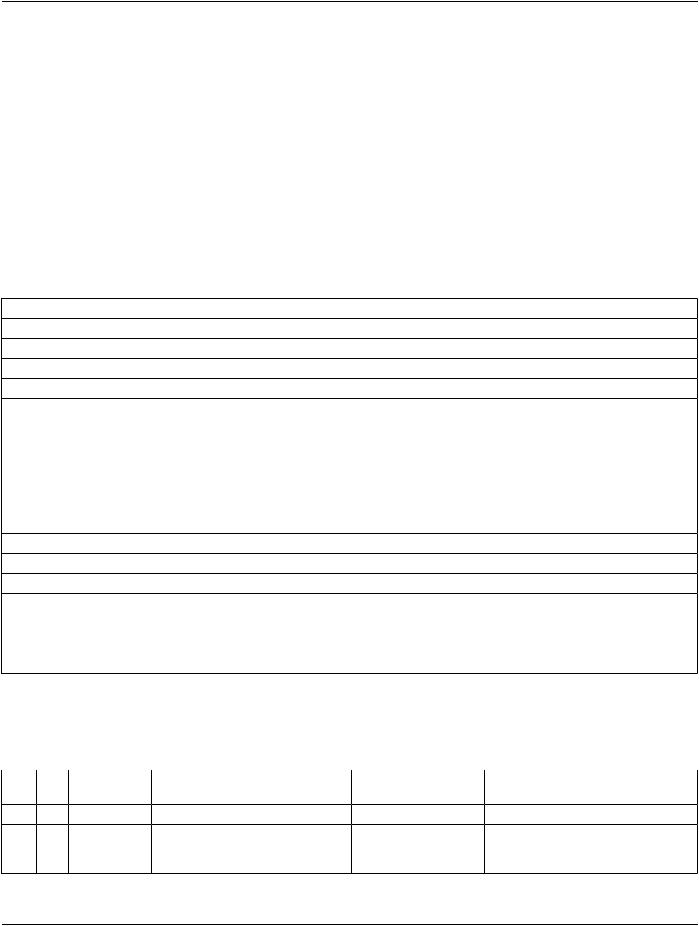
DICOM PS3.16 2020a - Content Mapping Resource |
Page 103 |
A Structured Reporting Templates (Normative)
This Annex specifies the content of Standard Templates that may be used by DICOM SR IODs.
General Templates
TID 300 Measurement
This Template provides a general structure for a numeric measurement, together with evaluations of its normality and/or significance, andtheinferencesource(s)foritsvalue.ThisstructureisinstantiatedbyinclusionofthisTemplatewithspecificcontextualparameters from a parent Template.
|
|
Table TID 300. Parameters |
|
|
||
Parameter Name |
|
|
Parameter Usage |
|||
$Measurement |
|
Coded term or Context Group for Concept Name of measurement |
||||
$Units |
|
Units of Measurement |
|
|
|
|
$ModType |
|
Modifier Name for Concept Name of measurement |
||||
$ModValue |
|
Modifier Value for Concept Name of measurement |
||||
$Method |
|
Value for Measurement Method |
|
|
||
$Derivation |
|
Value for Measurement Derivation |
|
|
||
$TargetSite |
|
Value(s) for Anatomic Location of measurement |
|
|||
$TargetSiteLaterality |
|
Laterality Value for Anatomic Location of measurement |
||||
$TargetSiteMod |
|
Modifier Value for Anatomic Location of measurement |
||||
$Equation |
|
Coded term or Context Group for the equation or table from which the measurement |
||||
|
|
was derived or computed |
|
|
||
$ImagePurpose |
|
Purpose of Reference for an image used as a source of the measurement |
||||
$WavePurpose |
|
Purpose of Reference for a waveform used as a source of the measurement |
||||
$RefAuthority |
|
Bibliographicreferenceorauthorityforstatisticalpropertiesofareferencepopulation |
||||
$RangeAuthority |
|
Bibliographic reference or authority for the normal range of the measurement |
||||
$DerivationParameter |
|
Coded term or Context Group for Concept Name of a derivation parameter |
||||
$DerivationParameterUnits |
Units of derivation parameter |
|
|
|||
$PrecoordinatedMeasurementMeaning |
Coded value for the precoordinated concept name of measurement |
|||||
Type: |
Extensible |
|
|
|
|
|
Order: |
Significant |
|
|
|
|
|
Root: |
No |
|
|
|
|
|
|
|
Table TID 300. Measurement |
|
|
||
NL Rel with |
VT |
Concept Name |
VM ReqCondition |
Value Set Constraint |
||
Parent |
|
|
|
Type |
|
|
1 |
NUM |
$Measurement |
1 |
M |
UNITS = $Units |
|
2 > HAS |
CODE |
$ModType |
1-n |
U |
$ModValue |
|
CONCEPT |
|
|
|
|
|
|
MOD |
|
|
|
|
|
|
- Standard -

Page 104 |
|
DICOM PS3.16 2020a - Content Mapping Resource |
|
|||||
|
NL Rel with |
VT |
Concept Name |
VM ReqCondition |
Value Set Constraint |
|||
|
|
Parent |
|
|
|
Type |
|
|
3 |
> |
HAS |
CODE |
EV (370129005, SCT, 1 |
U |
$Method |
||
|
|
CONCEPT |
|
"Measurement |
|
|
|
|
|
|
MOD |
|
Method") |
|
|
|
|
4 |
> |
HAS |
CODE |
EV (121401, DCM, |
1 |
U |
$Derivation |
|
|
|
CONCEPT |
|
"Derivation") |
|
|
|
|
|
|
MOD |
|
|
|
|
|
|
5 |
> |
HAS |
CODE |
EV (363698007, SCT,1-n |
U |
$TargetSite |
||
|
|
CONCEPT |
|
"Finding Site") |
|
|
|
|
|
|
MOD |
|
|
|
|
|
|
6 |
>> HAS |
CODE |
EV (272741003, SCT, 1 |
U |
$TargetSiteLaterality |
|||
|
|
CONCEPT |
|
"Laterality") |
|
|
Defaults to DCID 244 “Laterality” |
|
|
|
MOD |
|
|
|
|
||
7 |
>> HAS |
CODE |
DT (106233006, SCT, 1 |
U |
$TargetSiteMod |
|||
|
|
CONCEPT |
|
"Topographical |
|
|
|
|
|
|
MOD |
|
modifier") |
|
|
|
|
8 |
> |
HAS |
INCLUDE |
DTID 310 |
1 |
U |
$RefAuthority = $RefAuthority |
|
|
|
PROPERTIES |
“Measurement |
|
|
$RangeAuthority = $RangeAuthority |
||
|
|
|
|
Properties” |
|
|
||
9 |
> |
INFERRED |
NUM |
$DerivationParameter1-n UCXOR RowUNITS = $DerivationParameterUnits |
|||
|
|
FROM |
|
|
|
|
10 |
10 > |
R-INFERREDNUM |
$DerivationParameter1-n UCXOR RowUNITS = $DerivationParameterUnits |
|||||
|
|
FROM |
|
|
|
|
9 |
11 |
> |
INFERRED |
INCLUDE |
DTID315“Equationor 1 |
UCXOR Row$Equation = $Equation |
||
|
|
FROM |
|
Table” |
|
|
12 |
12 |
> |
INFERRED |
TEXT |
DCID228“Equationor 1 |
UCXOR Row |
||
|
|
FROM |
|
Table” |
|
|
11 |
13 |
> |
|
INCLUDE |
DTID 320 “Image or |
1-n |
U |
$Purpose = $ImagePurpose |
|
|
|
|
Spatial Coordinates” |
|
|
|
14 |
> |
|
INCLUDE |
DTID 321 “Waveform 1-n |
U |
$Purpose = $WavePurpose |
|
|
|
|
|
or Temporal |
|
|
|
|
|
|
|
Coordinates” |
|
|
|
15 |
> |
|
INCLUDE |
DTID1000“Quotation” 1 |
U |
|
|
16 |
> |
HAS |
TEXT |
EV (121050, DCM, |
1 |
U |
|
|
|
CONCEPT |
|
"Equivalent Meaning |
|
|
|
|
|
MOD |
|
of Concept Name") |
|
|
|
16b > |
HAS |
CODE |
EV (121050, DCM, |
1 |
U |
$PrecoordinatedMeasurementMeaning |
|
|
|
CONCEPT |
|
"EquivalentMeaning |
|
|
|
|
|
MOD |
|
of Concept Name") |
|
|
|
17 |
> |
HAS OBS |
INCLUDE |
DTID 4108 “Tracking |
1 |
U |
|
|
|
CONTEXT |
|
Identifier” |
|
|
|
18 |
> |
INFERRED |
COMPOSITEEV (126100, DCM, |
1 |
U |
SOP Class UID shall be Real World |
|
|
|
FROM |
|
"Real World Value |
|
|
Value Mapping Storage |
|
|
|
|
Map used for |
|
|
("1.2.840.10008.5.1.4.1.1.67") |
|
|
|
|
measurement") |
|
|
|
19 |
> |
HAS |
INCLUDE |
DTID 4019 “Algorithm 1 |
U |
|
|
|
|
CONCEPT |
|
Identification” |
|
|
|
|
|
MOD |
|
|
|
|
|
Content Item Descriptions
- Standard -
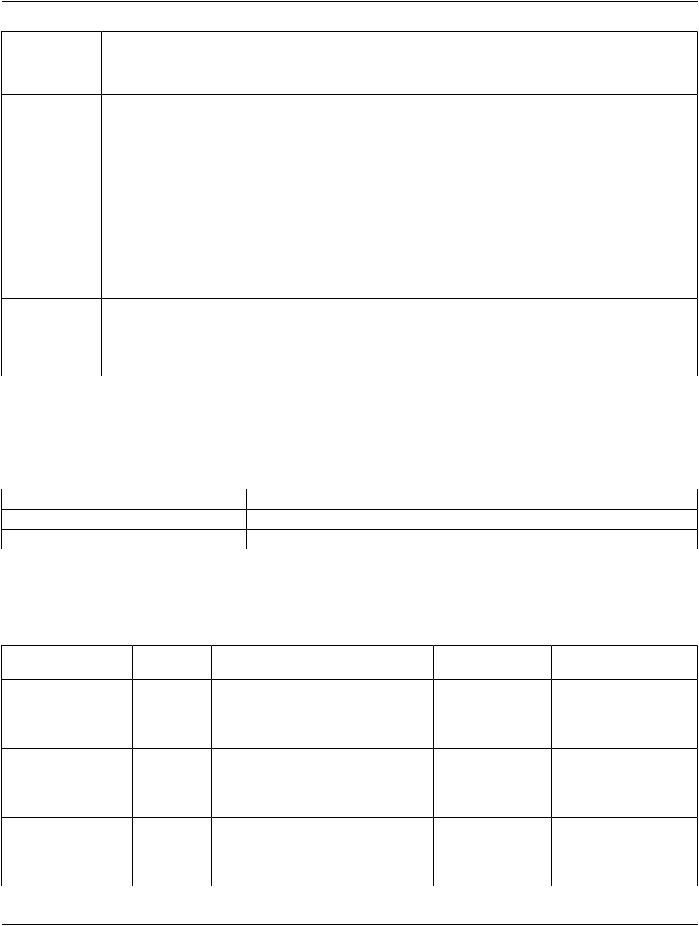
DICOM PS3.16 2020a - Content Mapping Resource |
Page 105 |
Rows 2, 3, 4, 5 The HAS CONCEPT MOD items allow the explicit definition of terms for post-coordination of the measurement concept name. Additional post-coordinated modifier terms may be included in a SOP Instance based on this Template, in accordance with section 6.2.4, or as defined by Templates that invoke this Template and explicitly define additional post-coordinated modifiers (e.g., TID 5203).
Row 5 |
Findingsitemaybemultiplewhenaregionofinterestspansmultipleanatomicallocationsandthereisnotasingle |
|
pre-coordinated code describing the combination of locations. E.g., when a maligant, inflammatory or traumatic |
|
process spans actual or defined anatomical boundaries. There is no requirement that the multiple locations be |
|
contiguous. |
Rows 9, 10 |
The INFERRED FROM items allow the specification (by-value or by-reference) of numeric values that were used |
|
in the derivation of the numeric measurement of Row 1. The nature of the inference is not explicitly conveyed; it |
|
may be implicit in the Concept Names of the measurements. Inference by-reference is valid only in SOP Classes |
|
that permit the INFERRED FROM relationship by-reference. |
Rows 16, 16b Equivalent Meaning of Concept Name allows the creating application to specify the preferred composed concept name representing the measurement and the associated post-coordinated concept modifiers. The concept modifiers may include those specified in this Template, in a Template that invokes this Template, or at the option of the creating application in accordance with Section 6.2.4. This composed concept name may be rendered by a display application. It may be supplied as text or coded concept or both.
Row 18 |
Row18isareferencetoanRWVthatdescribeshowmeasurementsweremadeinunitsthatdifferfromthestored |
|
pixel values in the images referenced in Row 13. E.g., for a PET SUVbw measurement, the mapping from |
|
activity/concentration units in the referenced image that was used (and which may be reused for measurements |
|
in the future) may be encoded in a referenced RWV instance. This reference overrides any reference in an |
|
including Template (such as for a Measurement Group). |
TID 310 Measurement Properties
This Template provides the properties of a numeric measurement, including evaluations of its normality and/or significance, its rela- tionship to a reference population, and an indication of its selection from a set of measurements.
|
|
Table TID 310. Parameters |
|
||
Parameter Name |
|
Parameter Usage |
|
||
$RefAuthority |
|
Bibliographic reference or authority for statistical properties of a reference population |
|||
$RangeAuthority |
|
Bibliographic reference or authority for the normal range of the measurement |
|||
Type: |
Extensible |
|
|
|
|
Order: |
Significant |
|
|
|
|
Root: |
No |
|
|
|
|
|
|
Table TID 310. Measurement Properties |
|
||
NLRel with VT |
Concept Name |
VM |
Req Condition Value Set Constraint |
||
Parent |
|
|
Type |
|
|
1 |
CODE |
EV (121402, DCM, "Normality") |
1 |
U |
DCID 222 “Normality |
|
|
|
|
|
Codes” |
2 |
INCLUDE |
DTID 311 “Measurement |
1 |
U |
$RefAuthority = |
|
|
Statistical Properties” |
|
|
$RefAuthority |
3 |
INCLUDE |
DTID 312 “Normal Range |
1 |
U |
$RangeAuthority = |
|
|
Properties” |
|
|
$RangeAuthority |
4 |
CODE |
EV (121403, DCM, "Level of |
1 |
U |
DCID 220 “Level of |
|
|
Significance") |
|
|
Significance” |
5 |
NUM |
DCID 225 “Measurement |
1-n |
U |
|
|
|
Uncertainty Concepts” |
|
|
|
6 |
CODE |
EV (121404, DCM, "Selection |
1 |
U |
DCID 224 “Selection |
|
|
Status") |
|
|
Method” |
- Standard -
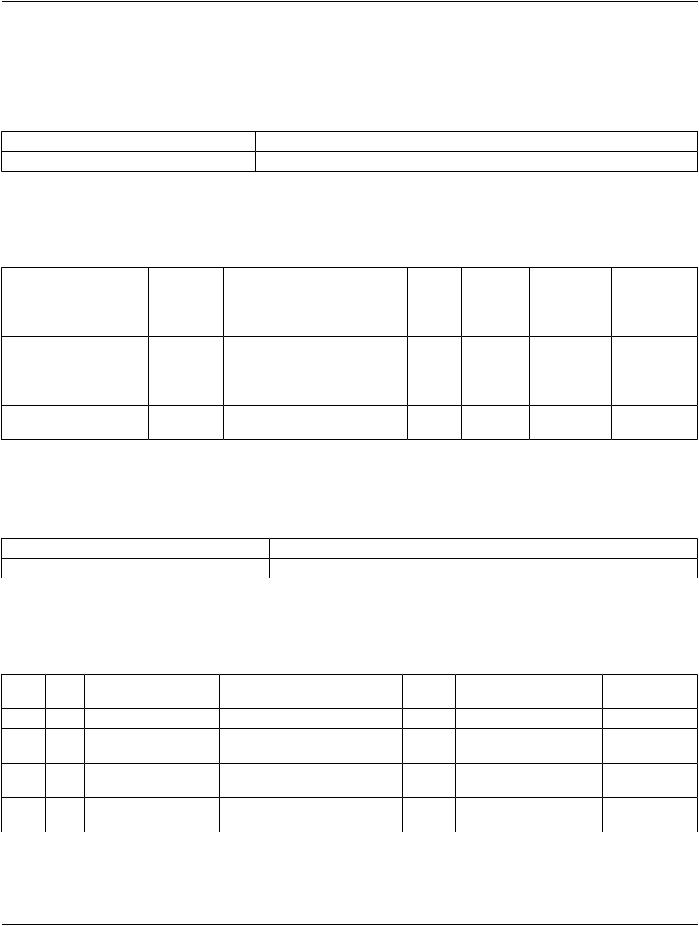
Page 106 |
DICOM PS3.16 2020a - Content Mapping Resource |
TID 311 Measurement Statistical Properties
This Template provides the statistical properties of a reference population for a numeric measurement, and/or the position of a measurement in such a reference population.
|
|
Table TID 311. Parameters |
|
|
|
|
Parameter Name |
|
Parameter Usage |
|
|||
$RefAuthority |
|
Bibliographicreferenceorauthorityforstatisticalpropertiesofareferencepopulation |
||||
Type: |
Extensible |
|
|
|
|
|
Order: |
Significant |
|
|
|
|
|
Root: |
No |
|
|
|
|
|
|
Table TID 311. Measurement Statistical Properties |
|
||||
NL |
Rel with VT |
Concept Name |
VM |
Req Type Condition |
Value Set |
|
|
Parent |
|
|
|
|
Constraint |
1 |
NUM |
DCID 221 “Measurement Range |
1-n |
M |
|
|
|
|
Concepts” |
|
|
|
|
2 |
TEXT |
EV (121405, DCM, "Population |
1 |
U |
|
|
|
|
description") |
|
|
|
|
3 |
TEXT |
EV (121406, DCM, "Reference |
1 |
UC |
XOR row 4 |
|
|
|
Authority") |
|
|
|
|
4 |
CODE |
EV (121406, DCM, "Reference |
1 |
UC |
XOR row 3 |
$RefAuthority |
|
|
Authority") |
|
|
|
|
TID 312 Normal Range Properties
This Template provides the normal range of values for a numeric measurement.
|
|
Table TID 312. Parameters |
|
|
|
|
Parameter Name |
|
Parameter Usage |
|
|||
$RangeAuthority |
|
Bibliographic reference or authority for the normal range of the measurement |
||||
Type: |
Extensible |
|
|
|
|
|
Order: |
Significant |
|
|
|
|
|
Root: |
No |
|
|
|
|
|
|
|
Table TID 312. Normal Range Properties |
|
|
||
NL Rel with VT |
Concept Name |
VM |
Req Type Condition |
Value Set |
||
Parent |
|
|
|
|
|
Constraint |
1 |
NUM |
DCID223“NormalRangeValues” |
1-n |
M |
|
|
2 |
TEXT |
EV(121407,DCM,"NormalRange |
1 |
U |
|
|
|
|
description") |
|
|
|
|
3 |
TEXT |
EV(121408,DCM,"NormalRange |
1 |
UC |
XOR row 4 |
|
|
|
Authority") |
|
|
|
|
4 |
CODE |
EV(121408,DCM,"NormalRange |
1 |
UC |
XOR row 3 |
$RangeAuthority |
|
|
Authority") |
|
|
|
|
- Standard -

DICOM PS3.16 2020a - Content Mapping Resource Page 107
TID 315 Equation or Table
|
|
|
Table TID 315. Parameters |
|
|
||
|
Parameter Name |
|
Parameter Usage |
|
|||
$Equation |
|
Coded term or Context Group for the equation or table from which a measurement was |
|||||
|
|
|
derived or computed |
|
|
|
|
Type: |
|
Extensible |
|
|
|
|
|
Order: |
|
Significant |
|
|
|
|
|
Root: |
|
No |
|
|
|
|
|
|
|
|
Table TID 315. Equation or Table |
|
|
||
|
NL |
Rel with Parent |
VT |
Concept Name |
VM |
Req TypeCondition Value Set |
|
|
|
|
|
|
|
|
Constraint |
1 |
|
|
CODE |
DCID228“Equation |
1 |
M |
$Equation |
|
|
|
|
or Table” |
|
|
|
2 |
> |
HAS PROPERTIES NUM |
|
1-n |
U |
|
|
3 |
> |
R-HAS PROPERTIESNUM |
|
1-n |
U |
|
|
Content Item Descriptions |
|
|
|
|
|
||
Row 2 |
The HAS PROPERTIES allows the specification of the numeric values used as input to the equation or table |
||||||
|
|
identified in Row 1. |
|
|
|
|
|
Row 3 |
The HAS PROPERTIES allows the specification by-reference of the numeric values used as input to the |
||||||
|
|
equation or table. This row is valid only in SOP Classes that permit the HAS PROPERTIES relationship |
|||||
|
|
by-reference. |
|
|
|
|
|
Note
For example, if Row 1 identifies a specific Body Surface Area equation, Rows 2 and 3 can be used to convey (by-value or by-reference) the Patient Height and Patient Weight numeric measurements used in the BSA computation.
TID 320 Image or Spatial Coordinates
This Template provides a general structure for inference from an image, either as a whole, or with specific spatial coordinates, as a single included Template in the invoking Template. If allowed by the IOD, the Image Content Item may be included by-reference.
|
|
Table TID 320. Parameters |
|
|
||
Parameter Name |
|
|
Parameter Usage |
|||
$Purpose |
|
Purpose of Reference for an image used as a source of the measurement |
||||
Type: |
Extensible |
|
|
|
|
|
Order: |
Significant |
|
|
|
|
|
Root: |
No |
|
|
|
|
|
|
Table TID 320. Image or Spatial Coordinates |
|
||||
NL |
Rel with Parent |
VT |
Concept |
VM |
Req Type |
Condition Value Set |
|
|
|
Name |
|
|
Constraint |
1 |
INFERRED FROM |
IMAGE |
$Purpose |
1 |
MC |
XOR Rows 2, 3 |
2 |
R-INFERRED FROM |
IMAGE |
|
1 |
MC |
XOR Rows 1, 3 |
3 |
INFERRED FROM |
SCOORD |
$Purpose |
1 |
MC |
XOR Rows 1, 2 |
- Standard -
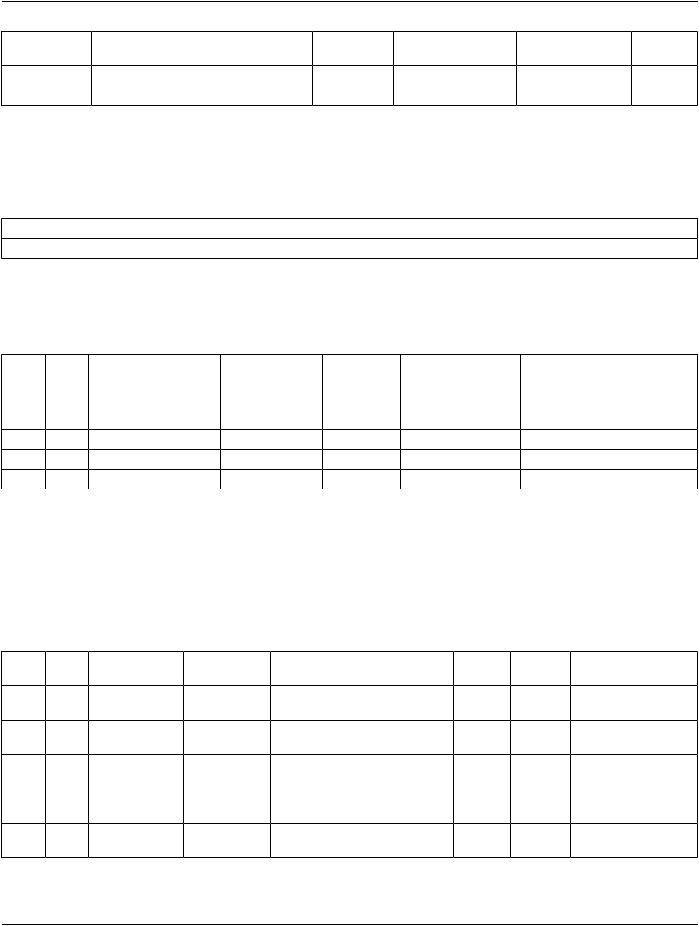
Page 108 |
DICOM PS3.16 2020a - Content Mapping Resource |
|
||||
|
NL |
Rel with Parent |
VT |
Concept VM |
Req Type |
Condition Value Set |
|
|
|
|
Name |
|
Constraint |
4 |
> |
SELECTED FROM |
IMAGE |
1 |
MC |
XOR Row 5 |
5 |
> |
R-SELECTED FROM IMAGE |
1 |
MC |
XOR Row 4 |
|
TID 321 Waveform or Temporal Coordinates
This Template provides a general structure for referencing a waveform, either as a whole, or with specific temporal coordinates, as asingleincludedTemplateintheinvokingTemplate.IfallowedbytheIOD,theWaveformContentItemmaybeincludedby-reference.
|
|
|
Table TID 321. Parameters |
|
|
||
|
Parameter Name |
|
|
Parameter Usage |
|||
$Purpose |
|
Purpose of Reference for a waveform used as a source of the measurement |
|||||
Type: |
|
Extensible |
|
|
|
|
|
Order: |
Significant |
|
|
|
|
||
Root: |
|
No |
|
|
|
|
|
|
|
Table TID 321. Waveform or Temporal Coordinates |
|||||
|
NL |
Rel with Parent |
VT |
Concept |
VM |
Req Type Condition Value Set |
|
|
|
|
|
Name |
|
|
Constraint |
1 |
|
INFERRED FROM |
WAVEFORM |
$Purpose |
1 |
MC |
XOR Rows 2, 3 |
2 |
|
R-INFERRED FROM WAVEFORM |
|
1 |
MC |
XOR Rows 1, 3 |
|
3 |
|
INFERRED FROM |
TCOORD |
$Purpose |
1 |
MC |
XOR Rows 1, 2 |
4 |
> |
SELECTED FROM |
WAVEFORM |
|
1 |
MC |
XOR Row 5 |
5 |
> |
R-SELECTED FROM WAVEFORM |
|
1 |
MC |
XOR Row 4 |
|
TID 350 References to Supporting Evidence
ThisTemplateprovidesreferencestosupportingevidenceintheformofDICOMcompositeobjects.Thisincludesreferencestoimages, spatial coordinates on images, and other composite objects, such as Structured Reports.
Type: |
Non-Extensible |
Order: |
Significant |
Root: |
No |
|
Table TID 350. References to Supporting Evidence |
|
NL Rel with Parent |
VT |
Concept Name |
VM |
Req TypeConditionValue Set |
|
|
|
|
|
|
|
Constraint |
1 |
|
IMAGE |
BCID 7003 “Diagnostic Imaging |
1-n |
U |
|
|
|
|
|
Report Purposes of Reference” |
|
|
2 |
|
SCOORD |
BCID 7003 “Diagnostic Imaging |
1-n |
U |
|
|
|
|
|
Report Purposes of Reference” |
|
|
3 |
> |
SELECTED IMAGE |
|
1 |
M |
|
|
|
FROM |
|
|
|
|
4 |
|
COMPOSITE DT (122073, DCM, "Current |
1-n |
U |
||
|
|
|
|
procedure evidence") |
|
|
5 |
> |
HAS CONCEPTCODE |
EV (121144, DCM, "Document |
1 |
U |
|
|
|
MOD |
|
Title") |
|
|
- Standard -
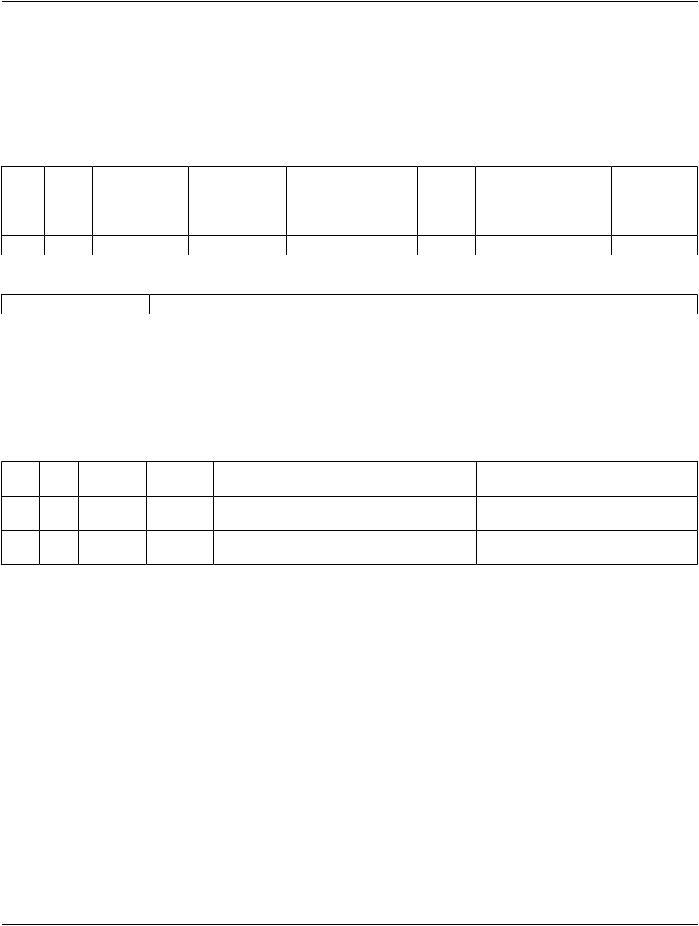
DICOM PS3.16 2020a - Content Mapping Resource |
Page 109 |
TID 351 Previous Reports
This general Template provides a means to reference previous structured reporting composite object instances.
Type: |
Extensible |
Order: |
Significant |
Root: |
No |
|
Table TID 351. Previous Reports |
NL |
Rel with Parent |
VT |
Concept Name |
VM |
Req TypeCondition Value Set |
|
|
|
|
|
Constraint |
1 |
CONTAINER |
EV (111549, DCM, |
1 |
M |
|
|
|
|
"Previous Reports") |
|
|
2 > |
CONTAINS COMPOSITE |
|
1-n |
M |
|
Content Item Descriptions |
|
|
|
|
|
Row 2 |
Concept Name may be the Root Concept Name (title) of a Structured Report composite object instance. |
||||
TID 400 Reference Location
This TID is a subset of the Reference Location Macro. See Section 10.27 “Reference Location Macro” in PS3.3.
Type: |
Extensible |
Order: |
Non-Significant |
Root: |
No |
Table TID 400. Reference Location
NL |
Rel with VT |
Concept Name |
VM Req TypeCondition Value Set Constraint |
||
|
Parent |
|
|
|
|
1 |
CODE |
EV (128772, DCM, |
1 |
M |
BCID 1001 “Anatomical |
|
|
"Reference Basis") |
|
|
Reference Basis” |
2 |
CODE |
EV (128773, DCM, |
1 |
M |
BCID 1010 “Reference |
|
|
"Reference Geometry") |
|
|
Geometry - Planes” |
TID 1000 Quotation
Unless otherwise specified, content in an SR tree is "directly" observed. When material is quoted (from a source that is either a doc- ument or something spoken), then it is necessary to specify:
•the fact that one is quoting
•who is doing the quoting
•the source of the quote
•who is being quoted, and who and what the quote is about
This Template establishes a mechanism for quoting by specifying:
•the fact that one is quoting, by the presence of the contents of the Template in the tree
•that the "observer context" above the invocation of this Template establishes who is doing the quoting
•the source of the quote, by the values of the Content Items in this Template
•who is being quoted, and who and what the quote is about, by the observation context that is established at the start of the quoted material
- Standard -
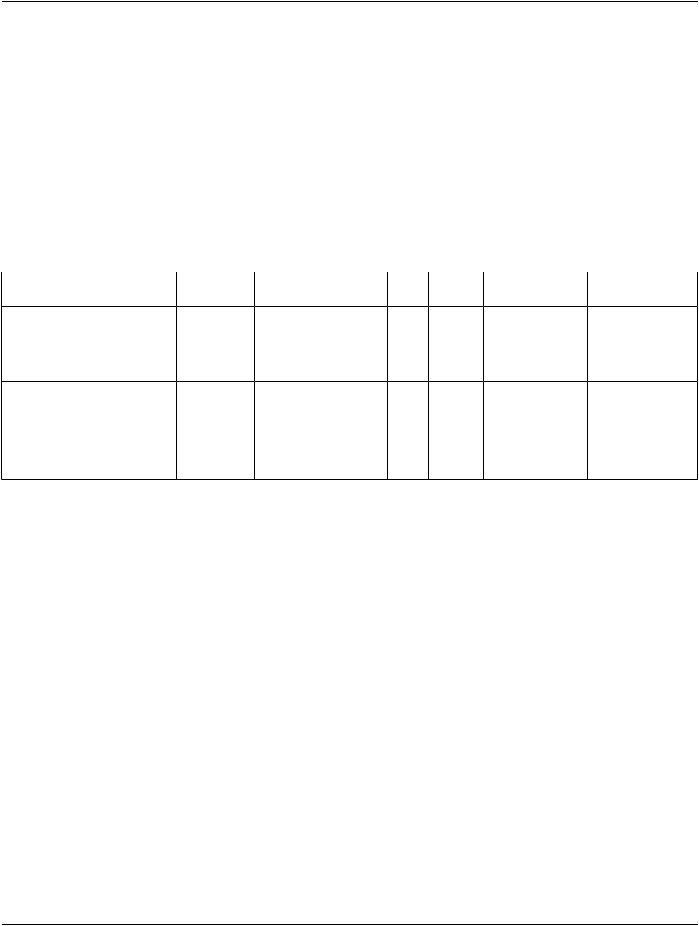
Page 110 |
DICOM PS3.16 2020a - Content Mapping Resource |
This Template may be invoked recursively, to nest quotes within quotes. In essence, the chain of who is quoting whom can be estab- lished by maintaining a "stack" of observer context.
If a dimension of observation context is the same in the quoted material as in the enclosing tree, then the observation context does notneedtoberespecified(e.g.,thequotemaybeaboutthesamesubjectorprocedure).Typically,theobservercontextwouldchange (unless one were quoting oneself).
In the case of quoting something that was spoken, the "observer" is the person speaking.
TID 1000 is attached using HAS OBS CONTEXT relationships to the top node of the material that is being quoted. The presence of the Quoted Source concept signals the fact that the material is quoted rather than directly observed.
Type: |
Extensible |
Order: |
Significant |
Root: |
No |
Table TID 1000. Quotation
|
NL Rel with Parent |
VT |
Concept Name |
VM |
Req |
Condition |
Value Set |
|
|
|
|
|
Type |
|
Constraint |
1 |
HAS OBS |
CODE |
EV (121001, DCM, |
1 |
M |
|
EV (121003, DCM, |
|
CONTEXT |
|
"Quotation Mode") |
|
|
|
"Document") |
|
|
|
|
|
|
|
EV (121004, DCM, |
|
|
|
|
|
|
|
"Verbal") |
2 |
HAS OBS |
COMPOSITEEV (121002, DCM, |
1 |
MC |
Required if quoted |
||
|
CONTEXT |
|
"Quoted Source") |
|
|
material source is |
|
|
|
|
|
|
|
a DICOM |
|
|
|
|
|
|
|
composite object |
|
3 |
HAS OBS |
INCLUDE |
DTID1001“Observation 1 |
M |
|
|
|
|
CONTEXT |
|
Context” |
|
|
|
|
TID 1001 Observation Context
Specifies attributes of observation context that may be defined, extended or replaced at any location in the SR tree.
This includes attributes that specify:
•who or what the observation is about ("subject context")
•what procedure the observation is about ("procedure context")
•who or what is making the observation ("observer context")
Establishing context includes two aspects of each dimension: identification and description (e.g., patient name and ID vs. patient's age, height or weight).
Whenever one dimension of context is changed or an attribute is added, all attributes of that dimension of context are "flushed", that is they need to be repeated in their entirety. For example, when the subject is changed from patient (name, id) to fetus (number), then the parameters of the patient are discarded. E.g., the patient's ID does not apply to the fetus.
"Extending" the same class and dimension of observation context isn't feasible, since one cannot "null out" or remove a previously set attribute. Any time a dimension of observation context is "replaced", any attributes that are unspecified remain unspecified (i.e., they are not inherited).
Type: |
Non-Extensible |
Order: |
Significant |
Root: |
No |
- Standard -
